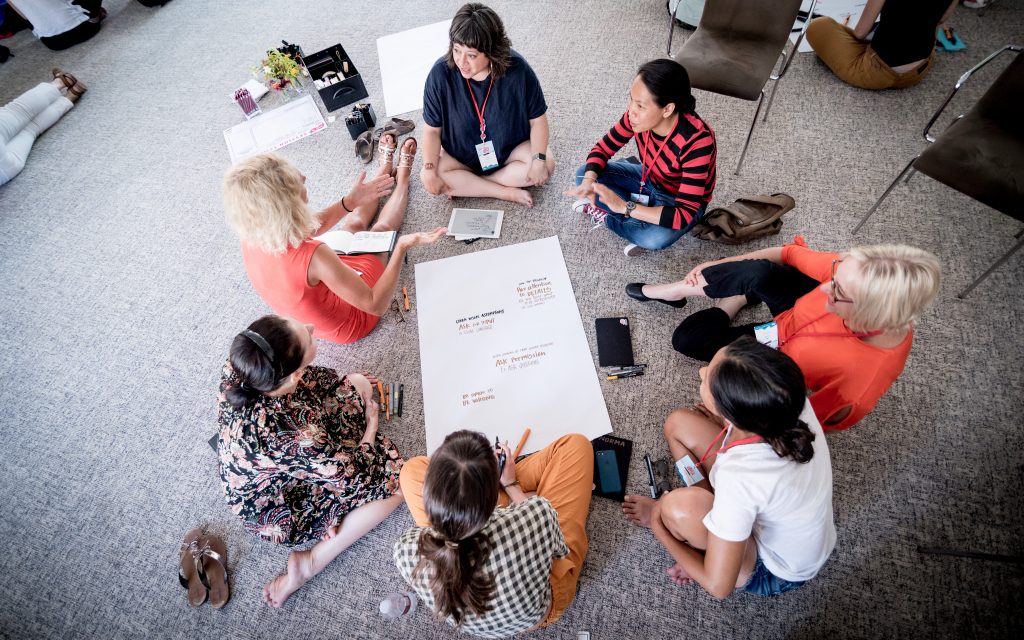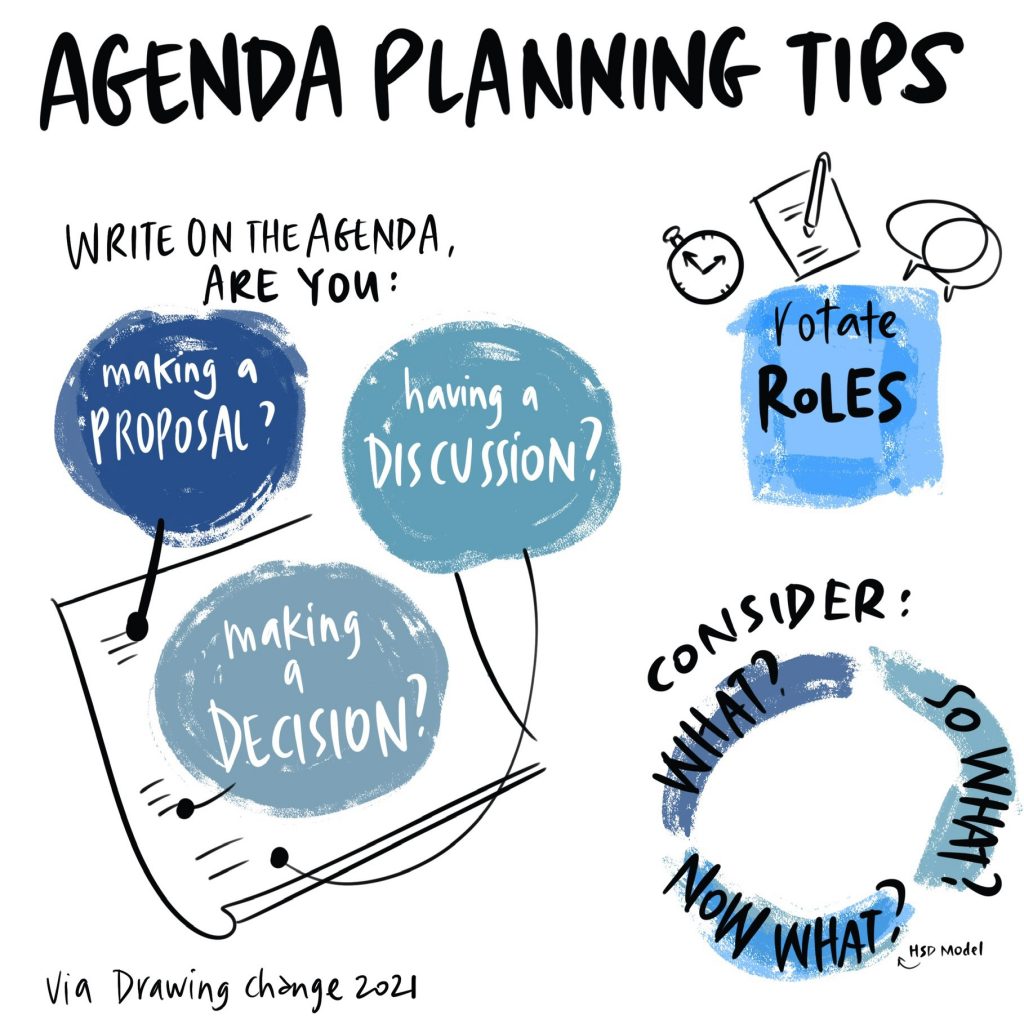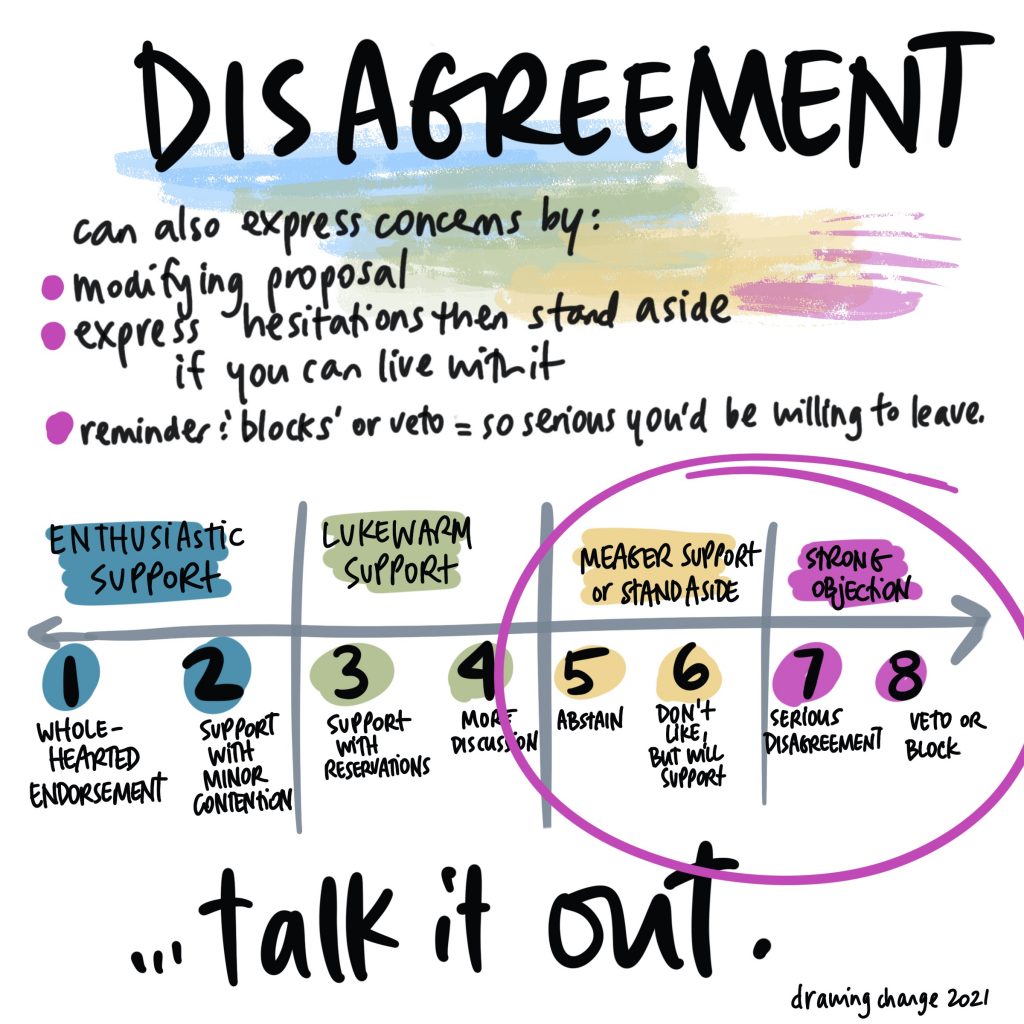
Things that pretend to be good meetings – and how visuals make it better
“Could this meeting have been an email?” Sometimes ….yes. Luckily, it doesn’t have to be this way. When you need to meet, make it count. Maximize your time together – and bring a sense of usefulness, a higher level purpose, or connection in how you gather. Here are some quick tips to diagnose if this is really a good meeting – and how a visual can make it even better. (Plus a bonus cheat sheet here:)
Have Purpose
What is pretending to be a good meeting: A group of people in a room who don’t know why they are meeting
What that really is: Expensive
What you could do instead: Set an agenda ahead of time. Have a clear purpose. Have a POP. Cancel the meeting if you don’t know why you’re meeting.
Visual tool: Visual agenda; visual POP

Increase Engagement
What is pretending to be a good meeting: Someone at a podium, and presenting to people for hours
What that really is: A lecture
What you could do instead: Present info for 5, 10 or 20 minutes. Have people talk with each other in group work / with activities in between
Visual tool: group work activity, with templates for the notetaking

Build Connection
What is pretending to be a good meeting: A group of people in a room, talking, without time limits
What that really is: A social
What you could do instead: Go out for lunch or coffee
Visual tool: Invitation (especially if it’s an organization-wide cross pollinating initiative)
Clear Invitation
What is pretending to be a good meeting: Brainstorming, but without decision makers present
What that really is: Frustration
What you could do instead: Invite the right people to the meeting
Visual tool: graphic recording the meeting process
Decision-Ready
What is pretending to be a good meeting: People talking, but no action steps
What that really is: Conversation
What you could do instead: Create accountability by summarizing next steps and responsibilities
Visual tool: a who/what/by when chart
Ask Questions
What is pretending to be a good meeting: One person dominating the microphone for Q&A
What that really is: Alienating
What you could do instead: Pair and share first for better participation. During Q&A, the facilitator should ensure people ask questions
Visual tool: post it notes for a pair and share

Enable Participation
What is pretending to be a good meeting: One person talking. Then the meeting ends
What that really is: Boring
What you could do instead. Enable participation: Do a round. Ask a question. Structure a short time (5 minutes) to connect with someone else
Visual Tool: Photo facilitation cards, or, share back 1 – 3 insights to be harvested
Write it Down
What is pretending to be a good meeting: Roundtable updates
What that really is: An email
What you could do instead: Send an email. If you need feedback, in person from people, then call a meeting
Visual tool: email with images

Be transparent
What is pretending to be a good meeting: An elaborate agenda with Roberts’ Rules or confusing rules about when to talk
What that really is: Gatekeeping
What you could do instead: Share the process with new people about the meeting rules. Enable time to network and build relationships, before the formal meeting starts
Visual tool: Visual instructions, clear signage
Okay to Change
What is Pretending to be a good meeting: Any meeting where “We Have Always Done it This Way”
What that really is: Sigh.
What you could do instead: The good news is that any small changes make a big difference. You could: rotate responsibilities, do a check in, choose a clear facilitator role, meet offsite, do a Liberating Structure….
Visual tools: bring in creative or visual methods, share maps for walking meeting, use creative or visual methods, graphic facilitation … the sky’s the limit!

Here’s a quick list of what great meetings should have:
- participation by more than one person talking
- a clear purpose
- clear outcomes
- an agenda
- the right people in the room
- opportunities for engagement
- action steps at the end
- and a timer (*in some cases!)
Visual tools can help with each of these stages, from visual agendas to graphic recording that show people their ideas matter. Because when people are engaged, connected and able to contribute – we all benefit.




